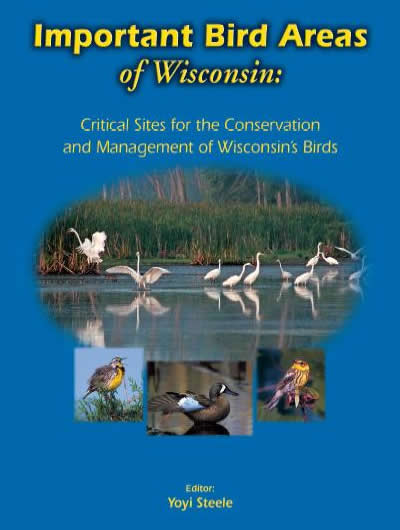Identifying sites is only the first phase of the IBA Program. IBAs require stewardship and monitoring to ensure that they remain important over the long-term for the birds they support. One of the strengths of the IBA Program is how the identification process can focus attention on an IBA, bring partners and stakeholders together, and serve as a catalyst for conservation action.
Since 2007, the IBA Program and partners have been actively engaged in conservation efforts at 3 large-river IBAs—Leopold Reserve-Pine Island; Lower Chippewa River; and Lower Wisconsin River—through a grant from the National Fish & Wildlife Foundation Upper Mississippi River Watershed Fund, with support from the Natural Resources Foundation of Wisconsin and Xcel Energy. To pursue our work at these 3 sites, we developed a strategic process for planning and implementing conservation that emphasizes placing each site in a larger context and striving to determine what its best contribution is to larger-scale (statewide and regional) bird conservation goals as well as to local bird conservation needs. Our process is based on Strategic Habitat Conservation (SHC), a science-based framework developed by the U.S. Fish & Wildlife Service for planning and delivering conservation efficiently. The SHC framework has been adopted by WBCP (formerly WBCI) in its efforts to implement statewide (WBCI All-bird Plan, Wisconsin Wildlife Action Plan) and regional (Upper Mississippi River & Great Lakes Joint Venture) bird conservation plans.
A Strategic Process
Although the specific details of how our project unfolded were a bit different for each of the 3 sites, the process we followed was similar. It is outlined below.
- Inventory
- Summarize and analyze data
- Identify priority species and communities
- Identify priority habitats and sites for management
- Determine population estimates for priority species
- Determine population goals and habitat objectives for priority species & habitats
- Identify management actions
- Implement management
- Monitor
- Evaluate and adapt
This process helped us answer questions that would make our efforts more efficient, such as “What is unique or distinctive about this site?”, “What can this IBA provide better than other sites of conservation significance?”, and “What is this IBA’s best contribution to bird conservation locally, statewide, and regionally?” It also allows us to define “success”, assess progress, and adapt by setting measureable objectives. The process includes a monitoring and evaluation component, enabling us to determine if our efforts are helping us to reach our goals and, if not, to adapt our work accordingly. The process is meant to be iterative and adaptive, to accommodate changing circumstances and new information.
Through collaborations with partners and stakeholders, we were then able to refine the process and tailor it to the particular circumstances of each site. We feel that this process can easily be transferred to other IBAs and adapted to plan and implement stewardship activities that meet the needs of the site and its owners, managers, and stakeholders.
Click on the links below for more details about our work at each of these IBA sites.
